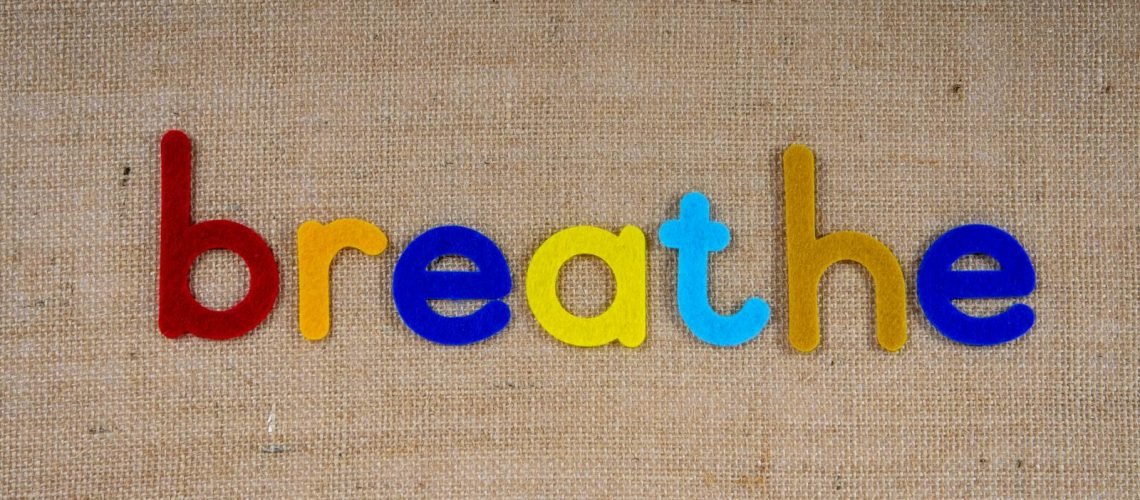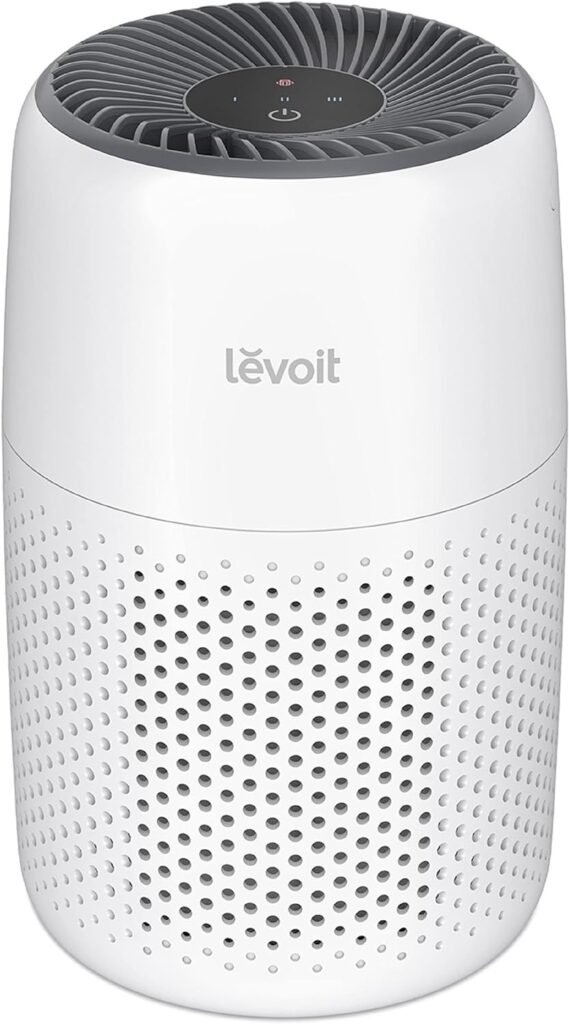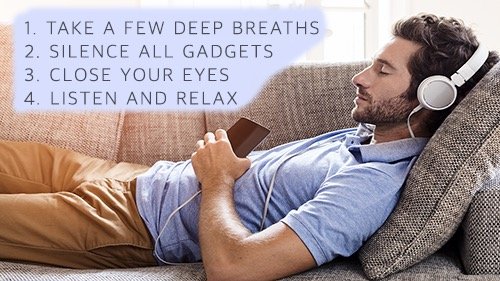Discover effective tips for making deep breathing a daily habit for stress relief. Learn how to incorporate this powerful technique into your routine for better well-being.
Deep Breathing for Stress Relief: Make Deep Breathing a Daily and Breath Your Stress Away
Did you know most people breathe shallowly into their chest, which can make anxiety worse? But, learning deep breathing can help you breathe deeper into your belly. This can ease stress and boost your well-being.
Adding 10-20 minutes of deep breathing to your day can help with stress and anxiety. Find a comfy spot, wear loose clothes, and don’t push yourself. Begin with breathing in and out to a count of five, then aim for counts of 10.
Deep breathing is a great way to calm stress and anxiety. Making it a daily habit can help you use your breath to relax your mind and body.
Key Takeaways:
- Deep breathing can significantly reduce stress and anxiety when practiced regularly.
- Start with breathing in and out to a count of five, gradually increasing the duration of your breaths.
- Dedicate 10-20 minutes per day to deep breathing exercises for maximum benefits.
- Choose a comfortable place and wear loose clothing to ensure a relaxing experience.
- Deep breathing engages the diaphragm and stimulates the parasympathetic nervous system, leading to relaxation.
The Power of Deep Breathing for Stress Relief
Benefits of Deep Breathing
Deep breathing, also known as diaphragmatic breathing, can greatly reduce stress and anxiety. In just 90 seconds, it can start a relaxation response, lowering stress hormones, blood pressure, and heart rate. Having a healthy breathing pattern is key to fighting stress, as a bad one can make stress worse. Breathing too much can make the stress system go into overdrive, making stress levels rise.
Studies show that deep breathing can help lower high blood pressure and heart rate in people with hypertension. It’s proven to reduce stress and anxiety in both healthy people and those with medical conditions. These exercises can also make life better and help manage stress in people with diabetes.
Research finds that diaphragmatic breathing can lessen the bad effects of stress hormones on the body. It can help with PTSD symptoms and lower heart rate and blood pressure. One big plus of diaphragmatic breathing is it cuts down on stress.
Setting the Stage for Deep Breathing

Wireless Premium Noise Canceling Overhead Headphones with Mic for Phone-Call and Alexa Voice Control
To benefit from deep breathing, find a quiet, comfy spot and wear loose clothes. Sit or lie down and focus on breathing deeply into your belly, not your chest. Aim for a pause of at least 20 seconds, with top athletes going longer. Breathing through your nose is best for getting more oxygen, better posture, and fighting overbreathing.
Deep-breathing exercises can help reduce anxiety, especially with alternate nostril breathing. Regular practice slows down your breathing, making you less reactive to stress and more focused and calm. Mixing diaphragmatic breathing with other treatments like cognitive behavioral therapy or hypnotherapy can make it even more effective for issues like IBS.
“Slow deep breathing activates the parasympathetic nervous system and inhibits the sympathetic nervous system, promoting relaxation and reducing stress responses.”
Deep breathing boosts positive feelings and behaviors, helping with emotional control and overall well-being. Different breathing exercises can make breathing more efficient by controlling pace, volume, and pauses, and working the diaphragm. Deep breathing exercises can lessen the stress impact on body and mind.
In athletes, deep breathing after hard exercise can start an antioxidant response, fighting off free radicals and boosting health. It can also help control the autonomic nervous system, leading to lower heart rate and blood pressure.
Belly Breathing Technique
Belly breathing, also known as diaphragmatic breathing, is a great way to reduce stress. It focuses on the diaphragm, a muscle under the lungs, to breathe more deeply and relax. Start by sitting or lying down comfortably.
Put one hand on your chest and the other on your belly. As you breathe in slowly through your nose, watch your belly rise and the hand move outward. When you breathe out through your mouth, let your belly fall and the hand move inward. Aim to make the belly hand move more than the chest hand to use your diaphragm well.
Start with 5 to 10 minutes of belly breathing, three to four times a day. Over time, you can breathe for longer. This technique helps use your lungs fully and can make breathing more efficient. It’s especially helpful for people with COPD, as it can increase oxygen in the blood and help muscles during exercise.
Belly breathing has many benefits, like reducing stress and making you feel calm. It can also lower your heart rate and blood pressure, and cut down on stress hormones. It’s great for managing stress and staying calm, and it can even make you feel more energetic and focused.
Adding belly breathing to your daily life can really help with stress and overall health. By focusing on your breath and using your diaphragm, you can enjoy the many advantages of this easy yet powerful practice.
To start belly breathing, sit or lie down comfortably and relax. Place your hands on your chest and belly. Breathe in slowly through your nose, feeling your belly rise, and breathe out through your mouth, letting it fall. You can use calming phrases or get help from a teacher or doctor if you need it. With regular practice, belly breathing can be a key tool for handling stress and improving your health.
| Benefit | Description |
|---|---|
| Stress Reduction | Diaphragmatic breathing can help lower heart rate, decrease blood pressure, and reduce cortisol levels, leading to stress relief. |
| Relaxation | The technique can promote calmness, enhance resilience, and foster a body-mind connection through mindfulness. |
| Improved Lung Function | Diaphragmatic breathing allows for deeper inhalation of oxygen, increasing lung efficiency and potentially benefiting individuals with respiratory conditions. |
| Enhanced Energy and Performance | The increased oxygen intake from diaphragmatic breathing can boost energy levels, mental clarity, and physical performance. |
| Digestive Support | Diaphragmatic breathing can massage the vagus nerve, triggering the “rest and digest mode” and supporting better digestion and bowel regularity. |
By making belly breathing a part of your daily life, you gain a powerful way to reduce stress, relax, and improve your health. Start with short sessions and increase the time as you get better at it. With regular practice, you’ll see the many benefits of this simple yet effective breathing exercise.
Tips for Making Deep Breathing a Daily Habit for Stress Relief
Adding deep breathing to your daily life is a great way to handle stress and anxiety. Start with small steps and keep at it. Aim to do 2-5 minutes of deep breathing once or twice a day, then increase the time as it gets easier. Pick specific times, like morning or before bed, to practice. You can also take short breaks during the day when you feel stressed.
Find a quiet spot to practice deep breathing. Close your eyes and focus on your breath, letting the calm sink in. Over time, deep breathing will become a natural way to relax whenever you need it.
Adding deep breathing with other relaxation methods can make it even more effective. Some like to use guided imagery or focus on a word while breathing. Adding exercise and eating well can also help with stress management.
To keep deep breathing a habit, think about using a mobile app or setting reminders. These tools can help you remember to practice and show you how to breathe correctly. Just start small and be patient as deep breathing becomes a regular part of your routine.
“Breathing is the foundation of all mindfulness and meditation practices. By focusing on your breath, you can calm your mind and body, reduce stress, and enter a state of deep relaxation.”
Adding deep breathing to your daily life can really change how you handle stress and anxiety. Begin with small steps, stay consistent, and let this powerful method become a key part of your wellness routine. With practice, deep breathing can help you find more calm, focus, and strength when facing life’s challenges.
Guided Imagery and Breath Focus
Deep breathing with guided imagery and a focus word can make you feel calmer. Imagine a peaceful scene or think of a word like “peace” as you breathe. Say “I breathe in peace and calm” on the inhale, and “I breathe out stress and tension” on the exhale.
This mix of breath and image can shift your mind away from worries and help you relax deeper.
Using a Focus Word or Phrase
Adding a focus word can boost your deep breathing for stress relief. Pick a word like “serenity” and say it silently as you breathe. This helps keep your focus and quiet your mind, making you more relaxed.
Using a positive affirmation with your breath can also be powerful. Say “I am calm and at peace” when you inhale, and “I release all tension and stress” when you exhale. This combo can reduce anxiety and make you feel centered.
Choose a focus word that feels calming to you. Try different techniques to see what suits you best. Adding this to your daily routine can help you enjoy the stress-relieving benefits of mindfulness.
| Breathing Technique | Description |
|---|---|
| Beginner Breathing | Start with five deep breaths for beginners. |
| Racing Mind Breathing | Breathe out longer, inhaling for 3 counts and exhaling for 6. |
| Anxious Breathing | Try belly breathing. Put a hand on your stomach and breathe in slowly through your nose, making your belly expand and contract. |
| Need to Focus Breathing | Do box breathing: inhale for 4 counts, hold for 4, exhale for 4, and hold again for 4 before breathing in. |
| Overwhelmed Breathing | Use alternate nostril breathing to balance your brain. Breathe in through one nostril, pause, breathe out the other, pause, then switch. |
“Incorporating a focus word or short phrase can make your deep breathing practice even more effective for stress relief.”
Deep breathing with guided imagery and a focus word can help you relax fully. Try different techniques to find what works for you, focusing on what brings calm and control.
Progressive Muscle Relaxation with Breathing
Progressive muscle relaxation is a great way to lower stress and anxiety. It involves tensing and relaxing different muscle groups while breathing deeply.
Start by getting comfy, either lying down or sitting. Take deep breaths, noticing how the air moves in and out. As you breathe in, tense your feet. Then, breathe out and let them relax fully.
Keep going up your body, tensing and relaxing muscles in your calves, thighs, and more. Linking muscle tension with your breath helps you relax fully.
Research shows that this method lowers stress and heart rate. Tensing and releasing muscles with deep breaths connects your mind and body. This helps ease anxiety and brings calm.
Adding this to your daily life can help manage stress and improve well-being. The more you do it, the better you’ll feel the benefits.
Energizing Breathing Exercises
Deep breathing exercises can calm you down, but some can also energize you. The Lion’s Breath is a yoga practice that helps release tension in the jaw and facial muscles.
Lion’s Breath
Sit comfortably and press your palms against your knees for the Lion’s Breath. Inhale deeply through your nose, then open your mouth wide. Stick out your tongue and exhale with a long “haaa” sound. This can make you feel more alert and release stress or frustration. Do this 2-3 times for a quick energy boost.
Practicing diaphragmatic or abdominal breathing can relax you, lower your heart rate, boost your metabolism, and even help lower your blood pressure. Alternate nostril breathing can help calm your mind, reduce anxiety, and balance you out.
Breathing in through the nose increases lung oxygen levels and filters out dust or allergens. Exhaling through the mouth lets more air out and relaxes your jaw and body. Skull shining breathing, a type of Lion’s Breath, improves heart and lung function, digestion, and core strength.
Adding just 2-3 minutes of these energizing breathing exercises to your day can wake up your mind and body. It helps reduce stress and anxiety.
“Breath meditation can lower heart rate, blood pressure, and ease fatigue.”
Conclusion
Deep breathing is a strong tool for handling stress and boosting well-being. Adding it to your daily life can lower your heart rate and blood pressure. It also helps improve your mental focus and clarity.
Try belly breathing, guided imagery, and progressive muscle relaxation to feel calmer and more balanced. Find the techniques that suit you best and stick with them. With regular practice, deep breathing can become a natural way to reduce stress. It makes dealing with daily life easier and more resilient.
Deep breathing can help with anxiety, boost your productivity, or just bring more peace inside you. This simple practice is powerful and can greatly improve your well-being.
FAQ
What are the benefits of deep breathing for stress relief?
Deep breathing can calm your heart rate and blood pressure. It also lowers cortisol levels. Plus, it boosts oxygen to your brain, making you more focused and clear-headed.
How do I set the stage for effective deep breathing exercises?
Look for a quiet spot and wear comfy clothes. Focus on breathing deeply into your belly, not just your chest.
What is the belly breathing technique, and how can it help with stress relief?
Belly breathing means placing one hand on your chest and the other on your belly. Focus on your belly moving more as you breathe. This engages your diaphragm, bringing in more oxygen and helping you relax.
How can I make deep breathing a regular habit for stress relief?
Begin with short sessions, 2-5 minutes, a few times a day. Gradually increase the time as you get better at it. Pick specific times, like morning or before bed, and find a quiet spot to practice.
How can I enhance the calming effects of deep breathing?
Mix deep breathing with guided imagery and a focus word. This can shift your thoughts to a peaceful place. Imagine a calm scene or use a word like “peace” as you breathe.
What is progressive muscle relaxation, and how does it work with deep breathing?
Progressive muscle relaxation means tensing and relaxing your muscles one by one. Do this while breathing deeply. It helps you relax both your body and mind.
Are there any energizing breathing exercises I can try?
Yes, try the Lion’s Breath from yoga. Breathe in deeply through your nose, then open your mouth wide and stick out your tongue. Exhale with a long “haaa” sound for a boost of energy.
Source Links
- https://www.webmd.com/balance/stress-management/stress-relief-breathing-techniques
- https://www.cnn.com/2021/07/07/health/breathing-stress-relief-calm-wellness/index.html
- https://positivepsychology.com/deep-breathing-techniques-exercises/
- https://www.healthline.com/health/diaphragmatic-breathing
- https://www.bannerhealth.com/healthcareblog/teach-me/the-life-changing-benefits-of-diaphragmatic-breathing
- https://my.clevelandclinic.org/health/articles/9445-diaphragmatic-breathing
- https://www.medicalnewstoday.com/articles/324417
- https://www.mayoclinichealthsystem.org/hometown-health/speaking-of-health/5-tips-to-manage-stress
- https://www.everydayhealth.com/alternative-health/living-with/ways-practice-breath-focused-meditation/
- https://www.calm.com/blog/breath-meditation
- https://www.headspace.com/meditation/breathing-exercises
- https://www.verywellmind.com/tips-to-reduce-stress-3145195
- https://www.ncbi.nlm.nih.gov/pmc/articles/PMC8272667/
- https://www.mayoclinic.org/healthy-lifestyle/stress-management/in-depth/relaxation-technique/art-20045368
- https://www.helpguide.org/articles/stress/relaxation-techniques-for-stress-relief.htm
- https://www.cnn.com/2021/07/23/health/morning-breathing-exercises-stress-relief-wellness/index.html
- https://positivepsychology.com/breathing-exercises-for-stress-relief/
- https://breathtechnologies.com/blog/stress-reduction/
- https://stlmentalhealth.com/the-art-of-deep-breathing-a-step-by-step-guide/








